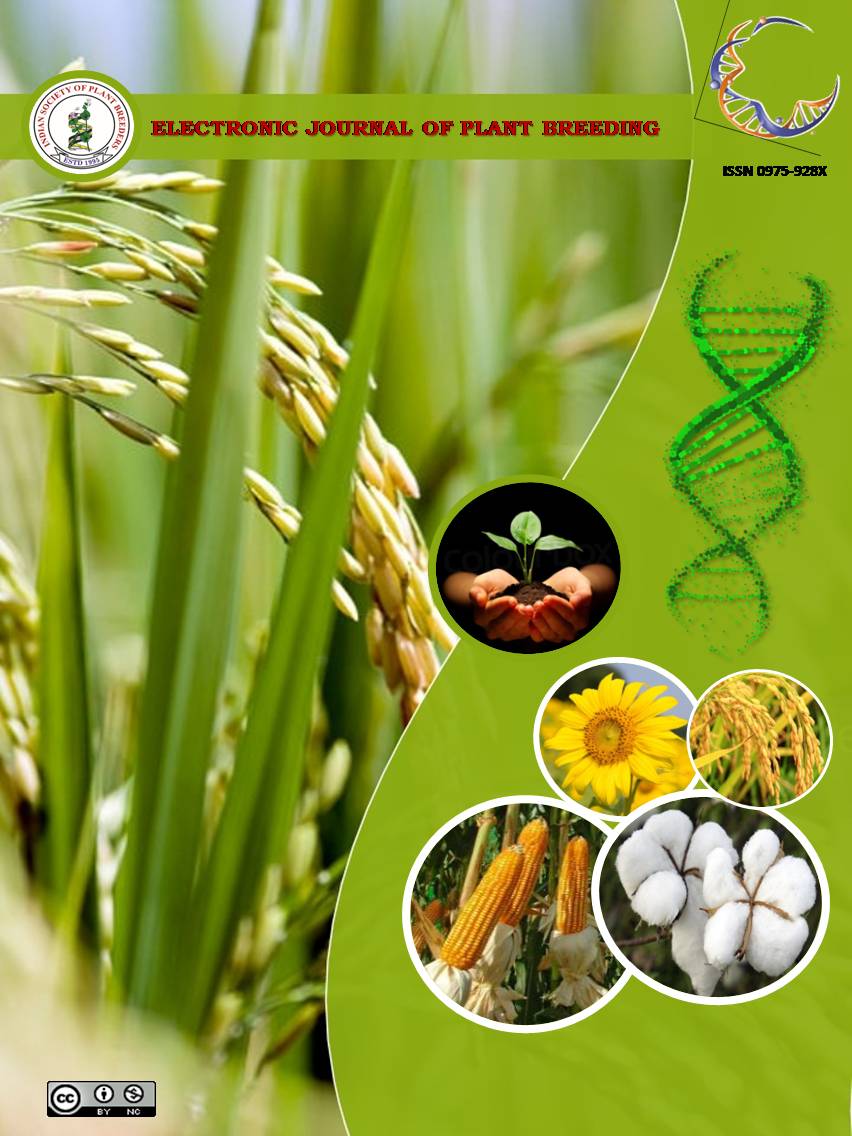Multivariate analysis in paprika (Capsicum annuum L.)
Abstract
Forty four genotypes of paprika (Capsicum annuumL.) which were evaluated to understand the extent of genetic diversity through 13 yield attributing and 7 quality traits at Horticultural Research Station, Lam, Guntur, Andhra Pradesh, revealed that the analysis of variance showed significant differences among the genotypes for all the characters studied. Based on hierarchical cluster analysis, the 44 genotypes were grouped into 7 clusters. Among all the clusters, cluster I was the largest containing 13 genotypes followed by cluster II with 10 genotypes, cluster III and cluster V with 6 genotypes, cluster VII with 4 genotypes, cluster IV with 3 genotypes and cluster VI with 2 genotypes. The maximum inter-cluster distance was observed between cluster IV and cluster VII (1217.10) and the minimum inter-cluster distance was observed between cluster I and cluster II (424.49). The cluster VII exhibited highest intra-cluster distance (475.42) and cluster VI had minimum intra-cluster Euclidean2 distance value of 231.65. The maximum per cent of contribution towards genetic divergence for yield contributing traits was shown bydry fruit yield per plant, weight of seedsper fruit followed by 1000 seed weight, fruit diameter, fruit length and number of fruits per plant. Whereas, higher contribution to the total divergence for quality traits were reported for total extractable colour followed by red carotenoids, yellow carotenoids, ascorbic acid, oleoresin content and capsaicin content. The principal component analysis revealed that first eight principal components with eigen value more than one were observed to contribute 83.62 per cent towards the total variability. Among the eight principal components, PC1contributed maximum towards variability (25.18%).Considering the diversity studies, hierarchical cluster the genotypes viz.,Warangal chapata double patti, Warangal chapata single patti, LCA-511 and LCA-512 belonging to cluster I and genotypes of cluster IV (LCA 466, LCA 480 andJangareddygudem local) were identified as promising parents and could be utilized for efficient hybridizationprogramme for high yield coupled with good quality traits in paprika.

It is certified that:
- The corresponding author is fully responsible for any disputes arising due to the publication of his/her manuscript.
- The article has been seen by all the authors who are satisfied with its form and content.
- The sequence of names of authors in the by-line is as per their relative contribution to this experiment, giving due credit to all scientists who made notable contribution to it.
- All the authors fully understand that inclusion of any other co-authors or exclusion of any co-authors is not possible once the article has been submitted to the journal.
- The corresponding author takes full responsibility for this article.
- The address of the organization where the research was conducted is given.
- The article is exclusive for this journal, and the results reported here have not been sent (and will not be sent during its consideration by this journal) for publication in any other journal.
- Authors agree to abide by the objective comments of referees and do agree to modify the article into a short note as per the recommendation, for publication in the Electronic Journal of Plant Breeding.
- If published in Electronic Journal of Plant Breeding, the copyright of this article would vest with the Indian Society of Plant Breeders, who will have the right to enter into any agreement with any organization in India or abroad engaged in reprography, photocopying, storage and dissemination of information contained in it, and neither we nor our legal heirs will have any claims on royalty.


